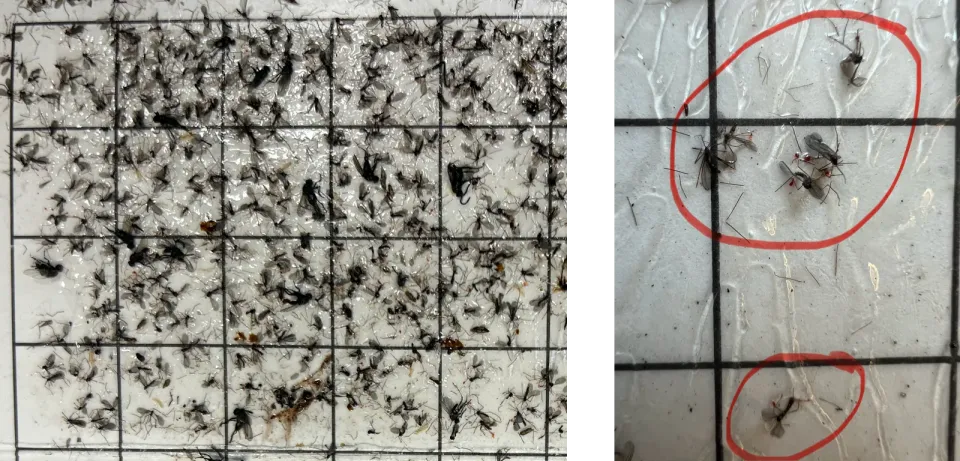Newly available Pherobank product, pheromone lure for Mayetiola destructor
Mayetiola destructor
English: Hessian fly
French: Cécidomyie du blé
Mayetiola destructor (Say), commonly known as the Hessian fly, is a significant pest of cereal crops, especially wheat. Native to Eurasia, it is believed to have been introduced to North America by Hessian soldiers during the American Revolution, giving it its name. The adult fly resembles a tiny mosquito, with its larvae posing the greatest threat to crops. These larvae feed on the stems of wheat plants, causing stunting, lodging, and ultimately, reduced grain yield. This damage is caused by the larvae injecting toxic saliva into the plant, which disrupts its growth.
The life cycle of M. destructor includes multiple generations per year, typically synchronized with the planting and growing seasons of wheat. Females lay their eggs on wheat leaves, and upon hatching, the larvae move to the base of the plant, where they feed and develop.
Pheromones play a key role in the mating behaviour of M. destructor. Females release a sex pheromone that attracts males from long distances. In 2009, Martin Andersson and colleagues identified the chemical structures of this pheromone, which is composed of a blend of five chiral compounds (see Figure 1). Pheromone-baited traps provide an effective tool for detecting early infestations.

Traps baited with this blend have been shown to attract large numbers of midges. Delta traps are effective for capturing this insect.

This pheromone, formulated in ready-to-use lures, is now available from Pherobank.
For more information about this insect please see:
- Andersson, M.N. et al. 2009. Identification of Sex Pheromone Components of Mayetiola destructor. J. Chem. Ecol. 35, 81-95
- https://gd.eppo.int/taxon/MAYEDE
- Mayetiola destructor pheromone lure, Pherobank article #: 50476
- only available as pheromone lures

